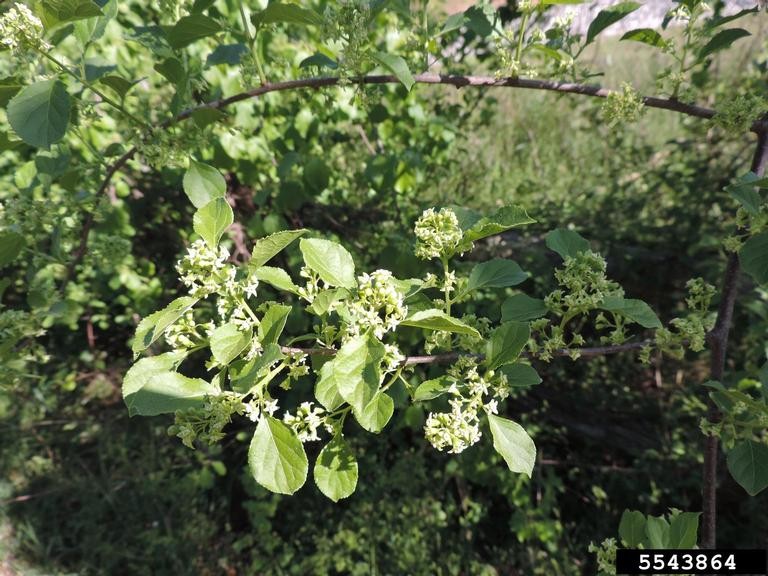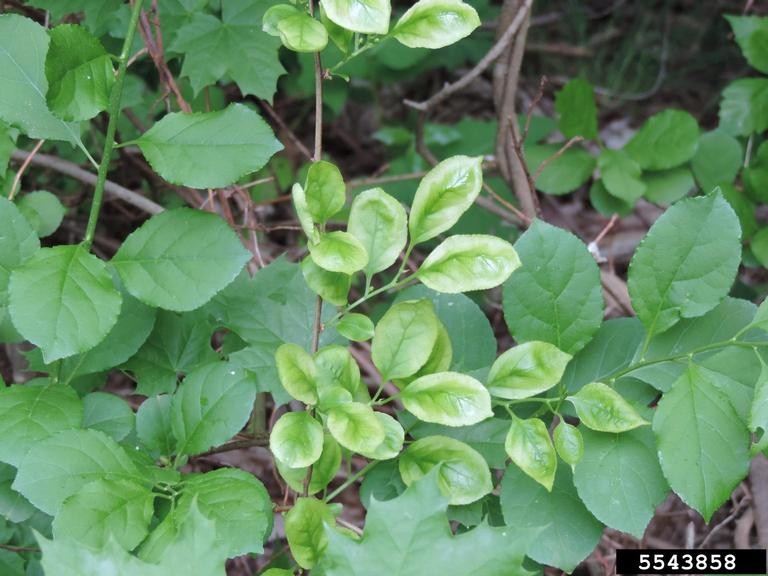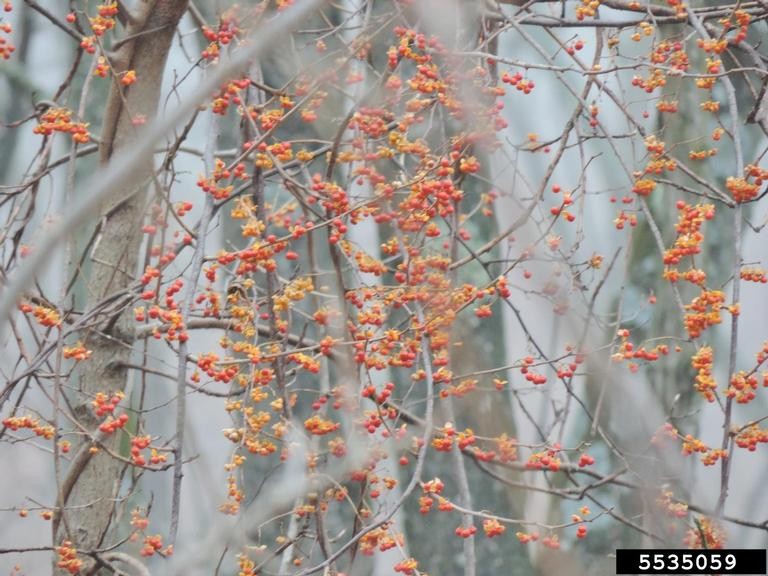Bittersweet
Oriental bittersweet (Celastrus orbiculatus), also known as roundleaved or Asian bittersweet, is a climbing, woody perennial vine.
Originally grown as an ornamental, it has spread throughout the region where its aggressive growth can smother trees, shrubs and other vegetation.

This leafy, deciduous, sprawling, twining vine climbs up and over woody plants and other supporting objects. Vines are many-branched, light brown to gray in color, though new branches may be green.
Surface of smaller branches dotted with tiny, lighter-colored bumps (lenticels). Stems of older vines can be up to 4 inches thick and climb over 60 feet. Leaves are arranged alternately along the stem, and vary widely in shape and can be round, oblong or teardrop-shaped with finely toothed margins.
Leaf length is usually less than twice the width. Size ranges from 2-5 inches long and 2-3.5 inches wide. They are glossy green in spring and summer, becoming golden yellow in late summer and fall. Clusters of 3-7 flowers appear in leaf axils in May or June. Small, 5-petaled, greenish-yellow blossoms are inconspicuous.
Clusters of 1-3 fruits attach at leaf axils along the stem. They are green in summer, becoming bright yellow/orange in late summer. The outer membrane splits in September and bends back, revealing a bright red, fleshy inner-fruit that contains 1-2 seeds. Some vines are laden with fruit, which can persist throughout winter.


Manual / Mechanical: Hand pulling or digging. This may be done in any season, but preferably before vines have fruited. Foliar herbicide (2,4-D plus triclopyr, or triclopyr alone) may be be applied in early spring or fall.